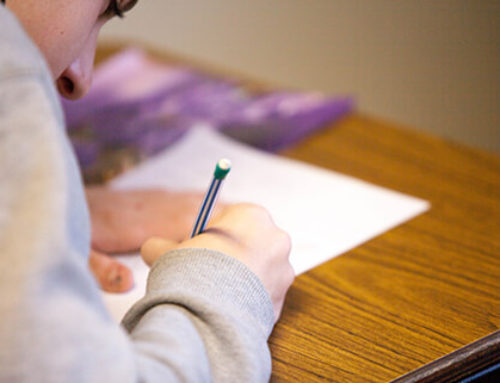Spelling and vocabulary instruction is an important part of a curriculum and an educator’s teaching strategies. However, having students solely memorize words or the terms and their meanings have proven to not be an effective way to learn like we first thought. While memorization is a great skill to have in life, it’s not the only way to learn, and it can be quite boring for students. Websites and apps like Spelling City make it fun for children to learn spelling and vocabulary words. Sites like these allow students to practice through multiple word exposures, not just through memorization. Here are a few more effective teaching strategies for teaching spelling and vocabulary words to your students.
Teaching Strategies: Create Spelling Stories
Do you remember, as a child, getting assigned to write a spelling story out of your spelling words? This can prove to be an ineffective method only if you have students try and write the story on their first exposure to the new words. However, once students have been exposed to the new words several times, then having them create a spelling story can be a wonderful teaching strategy that will help students in their literacy development and provide them the opportunity to apply their knowledge of the words into connected text. As students write and then read and reread their spelling story that has their spelling words in them, they will begin to develop more confidence in their reading skills.
After students have mastered their spelling words (when they know them inside and out), then you can assign them to write a spelling story. The goal is for students to write a story (usually with a theme) using all of their spelling words. Here is an example of a short spelling story about cats. The spelling words are highlighted.
I have a cat named Fido, he has black fur and likes to pounce when he plays. He only weighed an ounce when he was a baby. Fido likes it when I bounce a ball up and down.
In this short example, you can see the author created a story around the theme of a “Cat” using their spelling words. This is can be a fun and creative way for students to show they understand their spelling words and their meanings.
Play the Game Spelling Boom
Spelling Boom is a fun hands-on spelling game to reinforce spelling words. This game can be played with a partner, in a big group, or with a small group. To play the game Spelling Boom, write all of the spelling words onto popsicle sticks or small index cards (popsicle sticks are more fun). Make sure to write the word “Boom” on a few of the sticks or cards. Divide students into small groups. Each player then blindly draws a stick or card and hands it to the teacher or another player to read the word. If they spell the word correctly, they get to keep the stick or card. If they answer it incorrectly, then they must put it back into the cup or pile. If the student chooses a “Boom” stick or card, they must put back all of the words that they have collected so far. The person with the most sticks or cards at the end of the game wins.
Teach Word Awareness
Increase your students’ word awareness by having them create a collage out of different materials like magazines, newspapers, old workbooks, textbooks, etc. Challenge them to find 10 new and interesting words that really stand out to them. These words should be of different colors, shapes and sizes. Once they find their words, instruct them to glue the words onto a white piece of construction paper. Once the collages are completed, have students show them off to their classmates and tell them their favorite word on the collage. Then, display their word collages on the bulletin board or outside of your classroom.
Teach Unfamiliar Words
One of the most effective ways to teach your students new vocabulary words is to teach them unfamiliar words. Create a list of words that you know are unknown to your students and write them on a piece of paper. Then, each day, choose one word from your list and write that word in a sentence on the front board, remembering to underline the unknown word. Instruct students to read the sentence on the board and try to think of what the underline word means. Then have students draw a picture in their journals to show what they think the word means. Encourage each child to show off their illustrations and explain what they think the underlined word meant. Once everyone has had a turn, together as a class, look up the real definition in the dictionary. Once students know the real meaning of the word, have them try and write a sentence using the new word. If you do this every morning, five days a week, by the end of the school year think of how many new vocabulary words your students will know.
It’s essential to provide students with multiple exposures to words and their meanings. If you can get students to be interested in playing with words now, then they will be more likely to want to learn about new words in the future.






